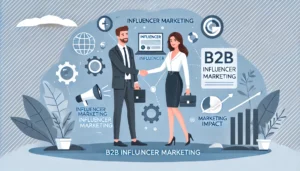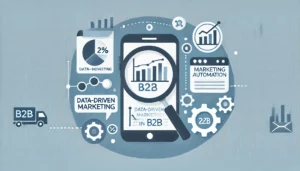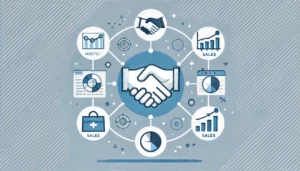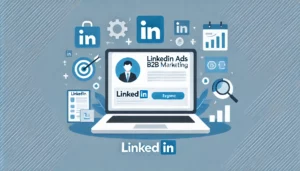The Role of Cold Emails in B2B Marketing

In the competitive world of B2B marketing, businesses constantly seek effective strategies to reach potential clients and generate leads. One such strategy that has stood the test of time is cold emailing. Despite the rise of various digital marketing channels, cold emails remain a powerful tool for direct and personalized communication. This blog explores the role of cold emails in B2B marketing and how they can be leveraged for success.
Understanding Cold Emails
Cold emails are unsolicited emails sent to potential clients or prospects with whom the sender has no prior relationship. Unlike spam, cold emails are highly targeted and personalized to address the specific needs and interests of the recipient. They aim to initiate a conversation, build relationships, and ultimately convert prospects into customers.
Benefits of Cold Emails in B2B Marketing
Cold emails offer several benefits that make them an essential component of B2B marketing strategies. Here are some of the key advantages:
Direct and Personalized Communication
Cold emails allow businesses to communicate directly with potential clients. This direct approach, combined with personalization, helps in establishing a connection and capturing the recipient’s attention. By addressing specific pain points and offering tailored solutions, cold emails can significantly increase the chances of engagement.
Cost-Effective Lead Generation
Compared to other marketing channels, cold emailing is relatively cost-effective. It requires minimal investment in terms of resources and tools, making it accessible for businesses of all sizes. With a well-crafted email, you can reach a large number of prospects without incurring high costs.
Scalability and Reach
Cold emails can be easily scaled to reach a wider audience. With the help of email automation tools, businesses can send personalized emails to hundreds or thousands of prospects simultaneously. This scalability allows for efficient lead generation and helps in expanding your reach to new markets.
Crafting the Perfect Cold Email
Writing an effective cold email involves several key components. Here’s how to craft a compelling message that resonates with your audience:
Effective Subject Lines
The subject line is the first thing the recipient sees and plays a crucial role in determining whether the email will be opened. A strong subject line should be clear, concise, and intriguing. Use personalization, urgency, and curiosity to grab the recipient’s attention.
Engaging Email Body
The body of the email should be well-structured and engaging. Start with a personalized greeting and introduce yourself and your company. Highlight the value proposition and explain how your solution can address the recipient’s specific pain points. Keep the content concise and to the point, and avoid using jargon or overly complex language.
Strong Call-to-Action (CTA)
A clear and compelling CTA is essential for driving the desired action. Whether it’s scheduling a call, signing up for a demo, or downloading a resource, the CTA should be specific and easy to follow. Use action-oriented language and provide a sense of urgency to encourage immediate response.
Targeting the Right Audience
The success of a cold email campaign largely depends on reaching the right audience. Here’s how to ensure your emails are targeting the most relevant prospects:
Identifying and Segmenting Your Target Audience
Start by defining your ideal customer profile (ICP) based on factors such as industry, company size, job title, and location. Segment your audience into smaller groups based on specific criteria to ensure your emails are highly targeted and relevant.
Researching and Building a Targeted Email List
Conduct thorough research to build a targeted email list. Use LinkedIn, industry directories, and professional networks to find potential prospects. Ensure that your list is accurate and up-to-date to maximize the effectiveness of your campaign.
Tools and Technologies for Cold Emailing
Several tools and technologies can enhance your cold emailing efforts. Here are some essential tools to consider:
Email Automation Tools
Email automation tools, such as Mailchimp, Outreach, and HubSpot, enable you to send personalized emails at scale. These tools allow you to schedule emails, track responses, and automate follow-ups, saving time and improving efficiency.
Tracking and Analytics Software
Tracking and analytics software, like Yesware and Mailtrack, provide insights into email performance. Monitor metrics such as open rates, click-through rates, and response rates to gauge the effectiveness of your campaigns and make data-driven improvements.
Personalization Tools
Personalization tools, such as Crystal and LinkedIn Sales Navigator, help you gather information about your prospects and tailor your emails accordingly. Use these tools to add personalized touches, such as addressing the recipient by name and referencing their specific needs or interests.
Compliance and Best Practices
Adhering to email marketing laws and best practices is crucial for maintaining trust and avoiding legal issues. Here’s what you need to know:
Understanding Email Marketing Laws and Regulations
Familiarize yourself with email marketing laws, such as GDPR (General Data Protection Regulation) and CAN-SPAM (Controlling the Assault of Non-Solicited Pornography And Marketing) Act. Ensure your emails comply with these regulations by including necessary elements, such as opt-out options and accurate sender information.
Ensuring Compliance with GDPR and CAN-SPAM
To comply with GDPR, obtain explicit consent from recipients before sending emails and provide a clear way for them to opt-out. For CAN-SPAM compliance, include a valid physical address, use accurate subject lines, and honor opt-out requests promptly.
Ethical Considerations in Cold Emailing
Maintain ethical standards by respecting your recipients’ privacy and avoiding deceptive practices. Always provide value in your emails and focus on building genuine relationships rather than solely pushing for sales.
Measuring Success and Optimization
Tracking and optimizing your cold email campaigns is essential for achieving better results. Here’s how to measure success and improve your strategy:
Key Metrics to Track
Monitor key metrics such as open rates, response rates, and conversion rates to evaluate the effectiveness of your campaigns. Use these metrics to identify areas for improvement and make data-driven decisions.
Using A/B Testing to Optimize Emails
Conduct A/B testing to compare different elements of your emails, such as subject lines, CTAs, and content. Analyze the results to determine which variations perform best and implement the winning strategies in your future campaigns.
Continuous Improvement Based on Feedback and Data
Gather feedback from recipients and use it to refine your approach. Continuously analyze data and adjust your strategy based on insights gained from previous campaigns. This iterative process will help you achieve better results over time.
Case Studies of Successful Cold Email Campaigns
Examining successful cold email campaigns can provide valuable insights and inspiration for your own efforts. Here are a few examples:
Company A: Personalized Outreach
Company A used highly personalized cold emails to reach out to key decision-makers in their industry. By addressing specific pain points and offering tailored solutions, they achieved a 40% response rate and generated several high-quality leads.
Company B: Leveraging Data and Automation
Company B utilized email automation and data-driven insights to optimize their cold email campaigns. By segmenting their audience and conducting A/B testing, they improved their open rates by 25% and doubled their conversion rates.
Company C: Creative Subject Lines and CTAs
Company C focused on crafting creative subject lines and compelling CTAs to capture recipients’ attention. Their innovative approach resulted in a 35% increase in response rates and significant growth in their lead pipeline.
Conclusion
Cold emails play a vital role in B2B marketing, offering a direct, personalized, and cost-effective way to reach potential clients. By crafting compelling emails, targeting the right audience, and leveraging the right tools, businesses can effectively generate leads and drive growth. Incorporate cold emails into your marketing strategy to unlock their full potential and achieve your business goals.
FAQs
1. What makes a cold email different from spam?
Unlike spam, cold emails are highly targeted and personalized to address the specific needs and interests of the recipient. Cold emails aim to initiate a conversation and build relationships, whereas spam is usually unsolicited and irrelevant.
2. How can I improve the response rate of my cold emails?
To improve response rates, focus on personalization, crafting compelling subject lines, and providing clear value in your email body. Ensure your call-to-action is specific and easy to follow, and consider A/B testing different elements to optimize performance.
3. What are some common mistakes to avoid in cold emailing?
Common mistakes include sending generic emails, using misleading subject lines, and failing to comply with email marketing laws. Avoiding these pitfalls and focusing on providing value and personalization will improve your cold email effectiveness.





